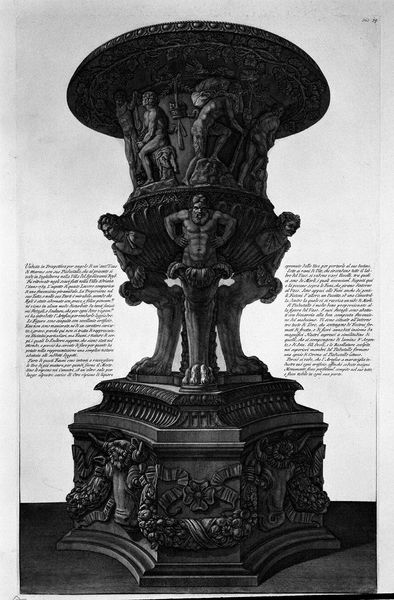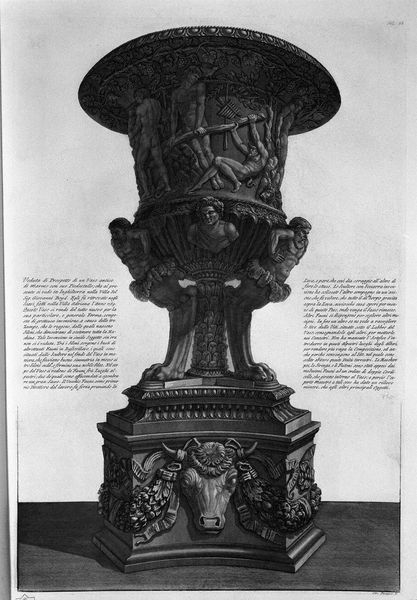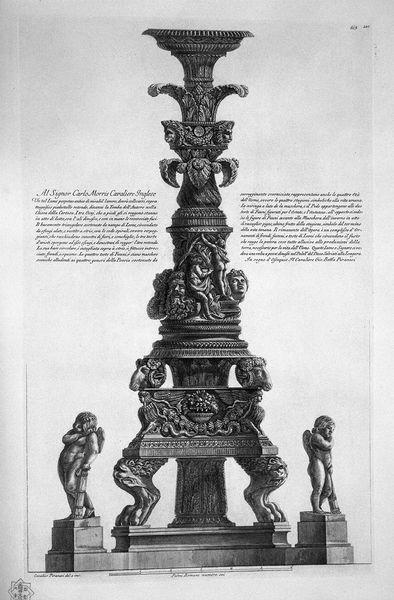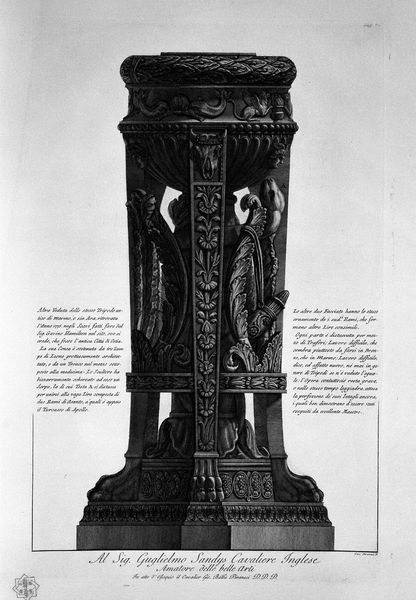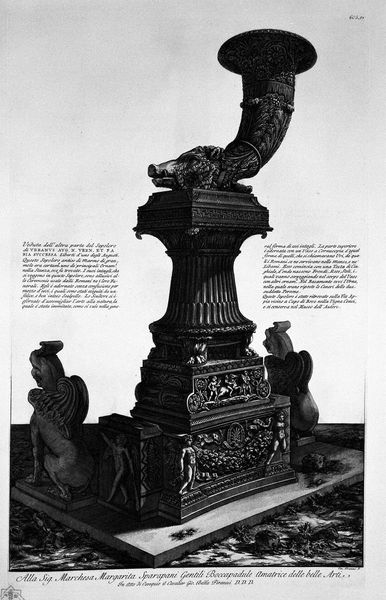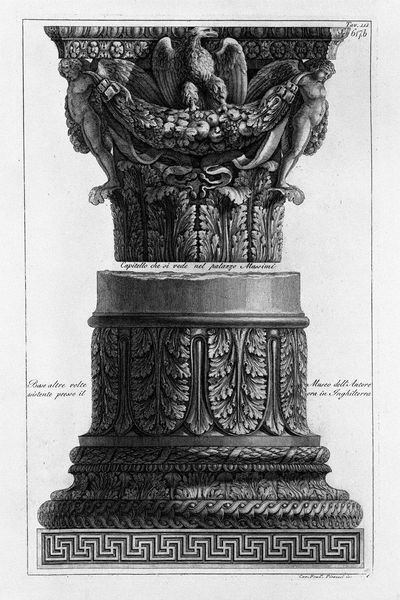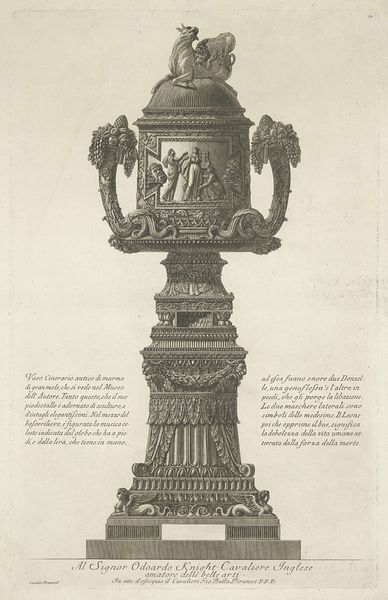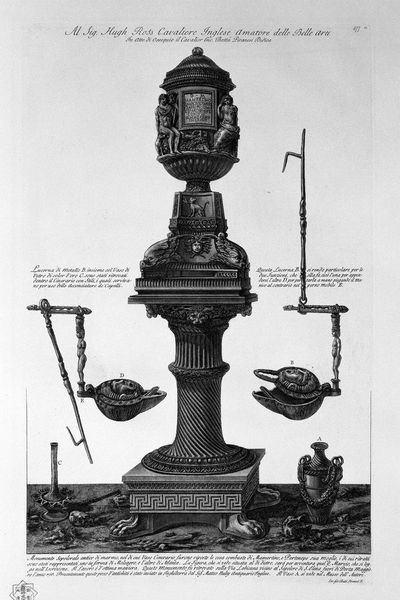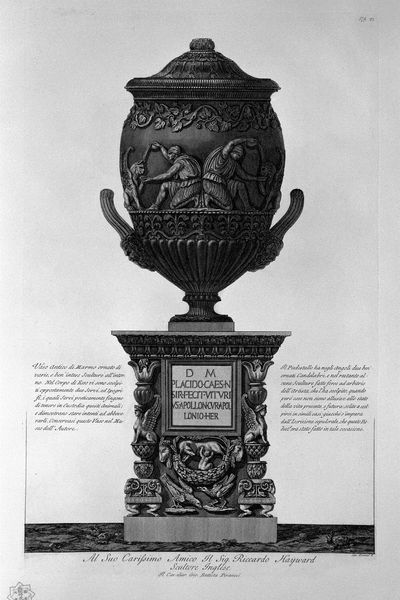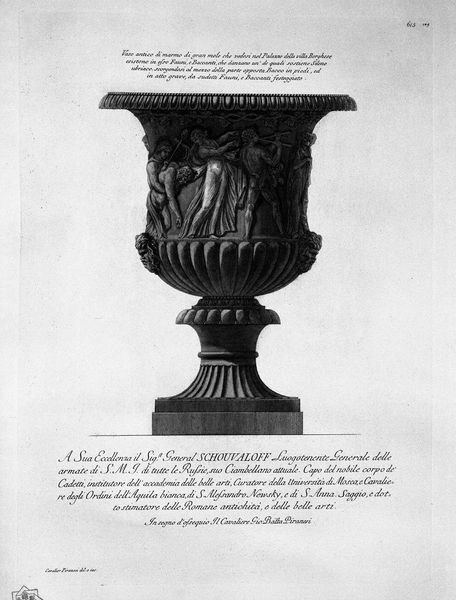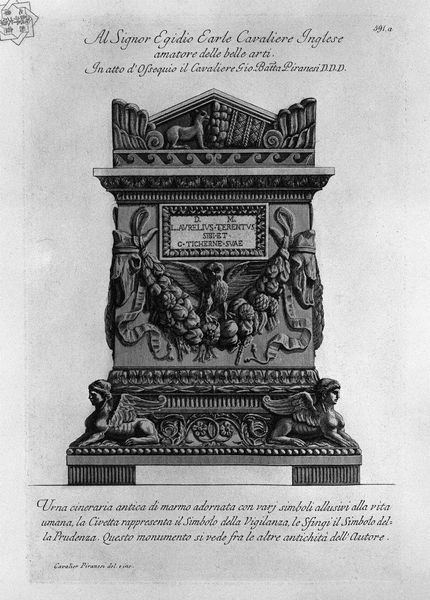
Great ancient vase with its marble pedestal found at Hadrian`s Villa in 1769
0:00
0:00
carving, print, etching, engraving
#
neoclacissism
#
carving
# print
#
etching
#
landscape
#
charcoal drawing
#
column
#
history-painting
#
decorative-art
#
engraving
Copyright: Public domain
Curator: This etching by Giovanni Battista Piranesi, entitled "Great ancient vase with its marble pedestal found at Hadrian's Villa in 1769," really captures the fervor for classical antiquity that gripped Europe. The print showcases a massive vase, elaborately decorated, as a symbol of Roman grandeur. Editor: My initial reaction is…overwhelming. It's grand, yes, but also intensely busy. There's almost a visual tension between the stark lines of the print medium and the baroque exuberance of the vase's details. I'm interested in how it reflects power, both ancient and contemporary to Piranesi. Curator: The vase itself, which was unearthed at Hadrian's Villa, immediately became a source of study and inspiration for artists. Piranesi, a master of architectural rendering and vedute, seized upon it. Notice the scale! These engravings brought the awe of these antiquities to a broader European audience, and fuelled the Neoclassical movement. Editor: Precisely. He's not just documenting; he's participating in the construction of a narrative. This vase becomes evidence, a material anchor for a very specific understanding of history, one that favored a certain idealized vision of empire. What’s rendered has consequence. How many enslaved laborers to bring the original materials to Rome and, then, craft it, for example. The unearthing itself could have displaced local workers. The act of documentation matters because there's a potential effect that favors certain social, economic, and racial groups. Curator: Piranesi certainly aimed to impress. And as a commercial printmaker, he's making the material itself available, affordable even, and in some sense more accessible through reproduction, not only documenting empire. The layers of carving also depict scenes, perhaps mythical narratives which add to its value. What do you make of the cherubic and satyr-like forms at the stem? Editor: The inclusion of those figures, the almost grotesque expressiveness of some of them, hints at the complex, often contradictory, nature of power itself. These are visual signifiers for stories in this monument to domination that could also encompass resistance or alternative narratives. In many cases, their voices go unrecorded by "history". Curator: A vital point, and something that Piranesi, perhaps unconsciously, alludes to in the very density of detail. One might see not a unified story, but echoes, reverberations, competing claims upon the object itself and how it gets defined as powerful. Editor: Yes. It's a piece that both embodies and, perhaps unintentionally, questions the authority it seems to celebrate. It compels us to analyze and think about not just "who" wrote history but "how," and from "what" perspective, to consider this image beyond mere Neoclassical taste, engaging with its deeper historical implications.
Comments
No comments
Be the first to comment and join the conversation on the ultimate creative platform.
